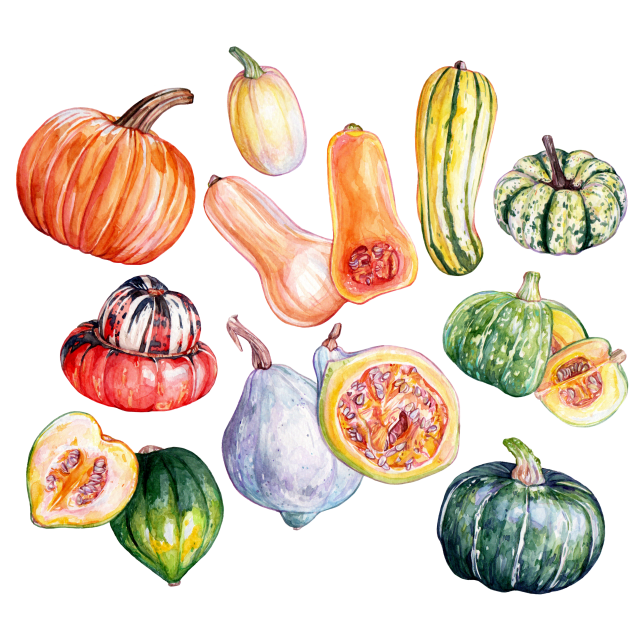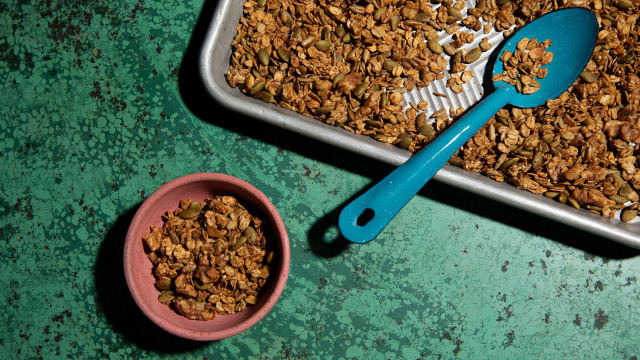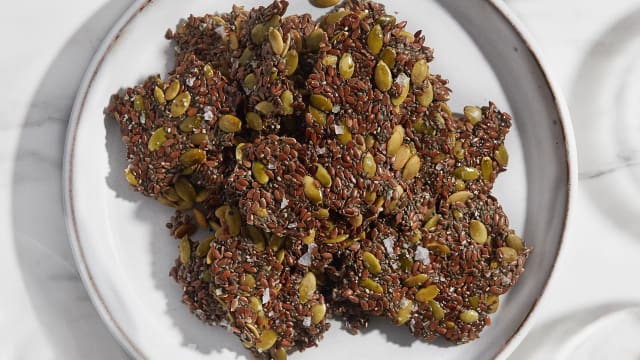Pumpkin Seed

Ingredient: Pumpkin seed
Latin name: Cucurbita pepo
Other names: pepita, egusi
Uses: seed, oil
What is a pumpkin seed?
Pumpkin seeds are the hulled or unhulled seeds from several types of winter squash (not just pumpkins!). You can eat them raw, sprouted or roasted.
Why are pumpkin seeds healthy?
Pumpkin seeds are high in protein, unsaturated fats, and fiber, as well being a great source of minerals such as zinc and magnesium. One serving has about half the daily recommended allowance of zinc, which is anti-inflammatory and antioxidant.
In addition, pumpkin seeds are very rich in antioxidants including flavonoids and phenolic acid, which have the ability to increase nitric oxide in the body. This help make pumpkin seeds heart healthy, reducing blood pressure and cholesterol and maintaining blood flow.
The high fiber and mineral content in pumpkin seeds help promote digestive health and blood sugar balance. The high amounts of zinc may help improve fertility.
What do pumpkin seeds taste like?
Pumpkin seeds have a nutty, almost fruity-vegetal taste that’s reminiscent of sunflower seeds with a slightly pumpkin-y aroma. The oil is dark olive green and very aromatic, with a distinctly nutty taste.
How do I use pumpkin seeds?
Pumpkin seeds are edible as-is, but roasting brings out the nutty fragrance; they’re also enhanced by sprouting. You can chop or grind them into a paste for enriching soups and stews (they form the basis of the Yucatecan salsa sikil p’ak and can be used like egusi in West African recipes) The oil has a low smoke point and should be used for drizzling rather than cooking.
What do pumpkin seeds pair well with?
Pumpkin seeds are a natural match for savory Mexican herbs and spices like cumin, coriander, and cilantro as well as sweet spices like cinnamon and nutmeg in baked goods. They’re wonderful with other Mesoamerican ingredients like cotija cheese and grilled corn and love other green/floral flavors like garlic scapes and squash blossoms.
Where do pumpkin seeds grow?
Pumpkin seeds grow inside winter squash, which are indigenous to Mesoamerica, but commercial production is dominated by China (which also grows about a third of all pumpkins) and India, but Mexico, the United States, and Ukraine produce them as well.
How to buy pumpkin seeds:
Pumpkin seeds are sold dry as a packaged snack or for adding to other foods; they’re available hulled and unhulled, raw and roasted, and with or without salt added. In the autumn in the United States, sometimes pumpkin seeds are available with pumpkin pie spice and sweetener added, but otherwise they’re sold year-round both in Mexican and American markets. Look for pumpkin seed oil in specialty stores, where it’s usually shelved with nut oils.
Fun pumpkin seed fact:
Pumpkin seeds have long been used as a vermifuge, or a folk remedy for ridding the body of worms. One written account from 1890 described a doctor prescribing a strong pumpkin seed tea for a patient afflicted with tapeworm; after four days, the patient passed an intact specimen ¾” thick and over 14 feet long. Coincidentally, the 9th-century Syrian physician Serapion thought that tapeworm segments resembled pumpkin seeds enough to warrant naming the parasite “cucurbitini,” or pumpkin seed worms.





